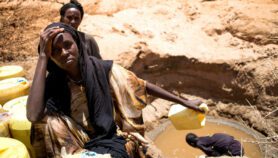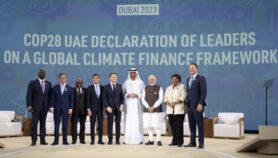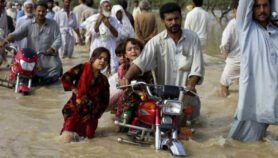Send to a friend
The details you provide on this page will not be used to send unsolicited email, and will not be sold to a 3rd party. See privacy policy.
The last stages of polio eradication suggest a new model of health campaigns much more responsive to global changes and local context.
It has been a particularly busy couple of months for the Global Polio Eradication Initiative (GPEI). The deadly attacks on vaccinators in Pakistan brought renewed global attention to the campaign, and then Bill Gates went public with his personal commitment to end polio. [1] The GPEI has responded with a strategy for what it calls the ‘endgame’. [2]
In some ways we have been here before. The polio eradication team promised to end polio by 2000, and then by 2005. Past successes are encouraging — humanity has eradicated smallpox, and more recently rinderpest, a deadly virus affecting cattle. But the context in which the GPEI operates suggests we can only learn so much from past success.
The smallpox model
Smallpox is often cited by the polio eradication campaign as a model from which to learn. Indeed, the similarities between the two campaigns are striking.
SPEED READ
- An ‘endgame’ strategy has been released as Bill Gates’ calls to end polio
- Smallpox eradication is often cited as a model, but there are telling differences
- Not least is the need to think locally for vaccine delivery
Both efforts were met with persistent and often localised distrust of the vaccine. In India, for example, boycotts and other forms of resistance have stretched across two centuries.
Both were caught up in geopolitics of the time. Smallpox campaigns were implicated in tactics of the Cold War, as the United States and the Soviet Union were initially the key suppliers of the vaccine, while post-9/11 efforts to eradicate polio have had to negotiate Muslim political resistance around the globe.
Finally, the last stages of the campaigns have been marked by challenges in a few regions — in the case of smallpox it was the insecure, drought-ravaged Horn of Africa, while for polio it is Afghanistan, Nigeria and Pakistan, where the virus still circulates.
But we shouldn’t overstate similarities between the two campaigns. A 1988 report by the WHO that documents the eradication of smallpox reveals some telling differences between the two campaigns. [3]
Offering lessons for future eradication campaigns, the report states that the polio effort would depend on the success of Western vaccination (which was in its infancy in 1988).
But it now seems naïve to model polio eradication on efforts that worked in Europe and North America. The GPEI has learned this lesson, however, and in its endgame strategy shows how the science and tactics behind National Immunization Days have evolved from experience in different countries.
This shift away from modelling global health campaigns on the West is likely to continue.
Evolving science
As the WHO report acknowledges, there are significant differences between smallpox and polio in immunology and vaccine effectiveness. Surveillance of polio is also more complicated, because people infected with the virus do not always show symptoms.
And vaccination guidelines that worked in developed countries had to be revised for new circumstances. By 2006, for instance, polio vaccinators had stopped giving children two drops twice, because they were not entirely sure how many drops were needed and how often in the crowded, under-sanitised slums.
These gaps in knowledge and the evolving nature of the science complicated delivery, not least because building trust with reluctant communities became difficult as vaccine protocols were constantly changing.
Without a doubt, gaps in scientific knowledge will affect efforts to thwart any global health threat. And making assumptions about how to control diseases based on past models will not serve us well — the threats are changing, and so are the tools at our disposal. Progress on stem cell research and gene therapy suggest a new world of bespoke vaccines.
Complex networks
The smallpox report states that the WHO is the only agency with the legitimacy, reach and expertise to coordinate an eradication campaign. Much of the effort then was bilateral, between the WHO and national governments. This is clearly no longer the case: the polio campaign is delivered through a complex ecosystem of organisations, public actors and civil society players.
For instance, while Australian scientist Frank Fenner is widely acknowledged as the hero of smallpox eradication, there is no clear figurehead for polio. Could it be Bill Gates or long-time champions like USAID’s Ellyn Ogden?
We now operate in a more multipolar world and influence, support or opposition can come from more places. Global campaigns can no longer rely on centralised power structures. For example, countries like Pakistan are devolving public health management to provincial level.
It is this complex of agendas and voices that has contributed to the arrest of journalists in Nigeria for allegedly inciting the murder of vaccinators. Vaccinators need to think about how to enter into a dialogue with communities to stimulate demand for vaccination, rather than solely rely on legislation and focus on safeguarding the vaccine cold chain.
Difficult delivery
Figuring out the fundamental science and how to apply it is only part of the challenge of eradication. Delivery is the final hurdle, and successful delivery relies on local governance capacity — presenting a dilemma for global campaigns.
On the one hand, global campaigns are keen to integrate with local health structures because a lack of national ownership is a liability. On the other, health systems in developing countries face critical challenges, around providing equal access to care and a reliance on treatment over prevention. And there are certain efficiencies with delivering a global campaign at scale.
Resolving this dilemma is possible — but it is clear that the way forward will require more sophisticated engagement with local health structures than we have seen so far. One word which recurs throughout the polio endgame strategy is ‘microplanning’.
There is poetry in acknowledging that the only way to reap the rewards from the tens of billions of dollars already spent on polio is by focusing on the most marginalised families in the most isolated communities for the next five years. And that is about focusing on systems at a very local level indeed.
Nick Ishmael Perkins
Director, SciDev.Net
@nick_ishmael
References
[1] 2013 Annual Letter from Bill Gates (The Bill and Melinda Gates Foundation, 2013)
[2] Polio Eradication and Endgame Strategic Plan (The Global Polio Eradication Initiative, 2013)
[3] Smallpox and its Eradication (WHO, 1988)













